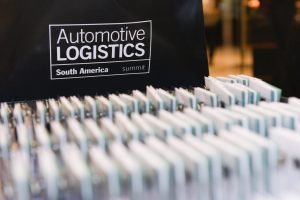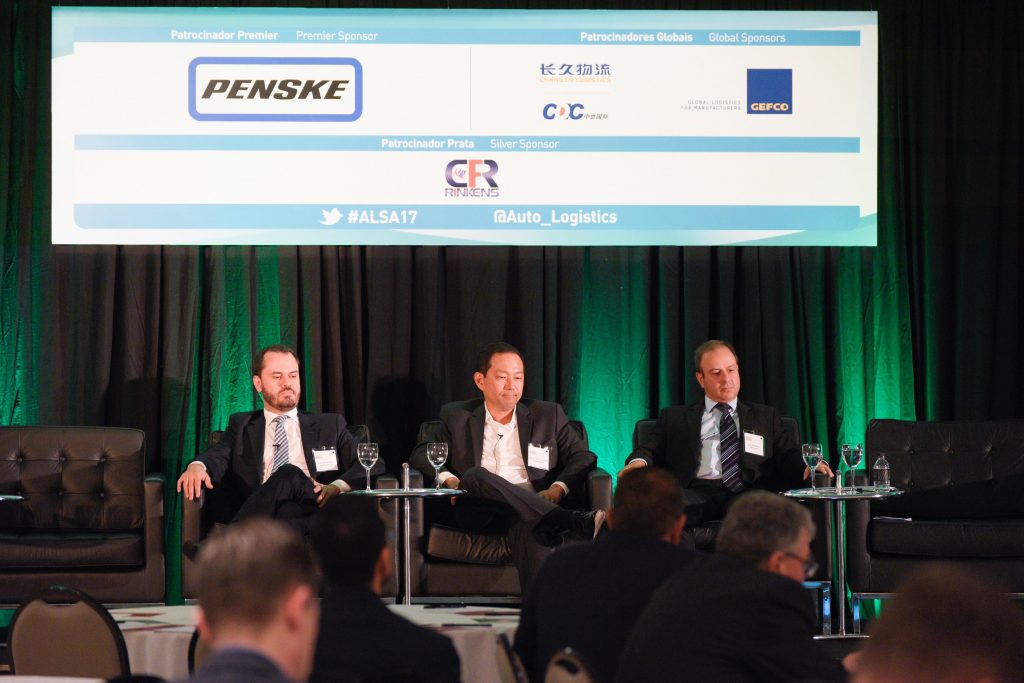 The Brazilian economy has had it rough over the past few years, experiencing its deepest recession since the 1930s, with GDP growth shrinking for eight consecutive quarters. That contributed to a drought in new vehicle sales from 2013 through to 2016. This long crisis laid waste to many parts of the Brazilian and wider South American automotive sector and its supply chain. Suppliers went bust or closed factories; several carmakers, including China’s Chery, mothballed or sold production sites; other manufacturers cut back investments and scaled back former plans; and logistics firms went out of business, sold off assets or consolidated to survive a decline in rates and business volume.
The Brazilian economy has had it rough over the past few years, experiencing its deepest recession since the 1930s, with GDP growth shrinking for eight consecutive quarters. That contributed to a drought in new vehicle sales from 2013 through to 2016. This long crisis laid waste to many parts of the Brazilian and wider South American automotive sector and its supply chain. Suppliers went bust or closed factories; several carmakers, including China’s Chery, mothballed or sold production sites; other manufacturers cut back investments and scaled back former plans; and logistics firms went out of business, sold off assets or consolidated to survive a decline in rates and business volume.
But there were some positive developments as well. The government, though in significant turmoil, has made moves to improve some business processes, such as customs clearance, while lowering taxes in certain areas; efforts have been made, in particular, to support exports, including fast clearance lanes at ports. And despite Brazil’s historically protectionist tendencies, there have also been moves to improve trade relations, especially with the Mercosur trade bloc which includes Brazil, Argentina, Paraguay and Uruguay (Venezuela is currently suspended).
Companies have made many adjustments to survive, including cutting costs and striving to become more competitive for an eventual return to growth.
And finally, light is appearing. Growth in GDP returned in Brazil earlier this year and while initially driven by agriculture, the recovery now appears increasingly broad-based, from consumer products to vehicles. Economic indicators are positive and mostly conducive to growth; inflation has fallen to its lowest level in Brazil since the turn of the 21st century, raising real incomes and allowing for lower central bank interest rates.
The Brazilian real is also at a competitive level to the US dollar and other foreign currencies, further supporting exports. Trade has also been helped by economic reforms and recovery in Brazil’s most important destination market and neighbour, Argentina.
These developments have brought some relief to the car market and hope for the future of the South American automotive supply chain. Forecasts are now for new light vehicle production to finish almost 25% higher this year, at 2.6m units, according to Helton Arsenio, senior marketing analyst at PwC Autofacts in Brazil. The assembly growth has been driven by double-digit gains in domestic sales and a surge in vehicle exports.
Only the strong surviveSpeakers at this year's Automotive Logistics South America summit in São Paulo expressed clear relief at the official end of the recession.
Luis Santamaria, vice-president of supply chain for Latin America at Fiat Chrysler, the largest carmaker in Brazil, said companies that had survived the past few years would probably have come out stronger.
“Just being here after this turbulent year is already a victory,” Santamaria told delegates.
But executives also warned that gains made and lessons learned during the crisis should not be lost, now that growth had finally resumed. While Santamaria was optimistic about the future, he stressed the importance of maintaining recent supply chain improvements. Efficiency in internal processes is often still Brazilian carmakers’ best hope in overcoming the country’s chronic infrastructure shortages, inefficient customs and thick bureaucracy.
“Not losing what we have gained in terms of costs will be a great challenge, not only for our internal processes but also in terms of the lack of investment over the past decade in ports, airports and bureaucracy and customs,” he said. “We will have to be very close to these things and interact with them.”
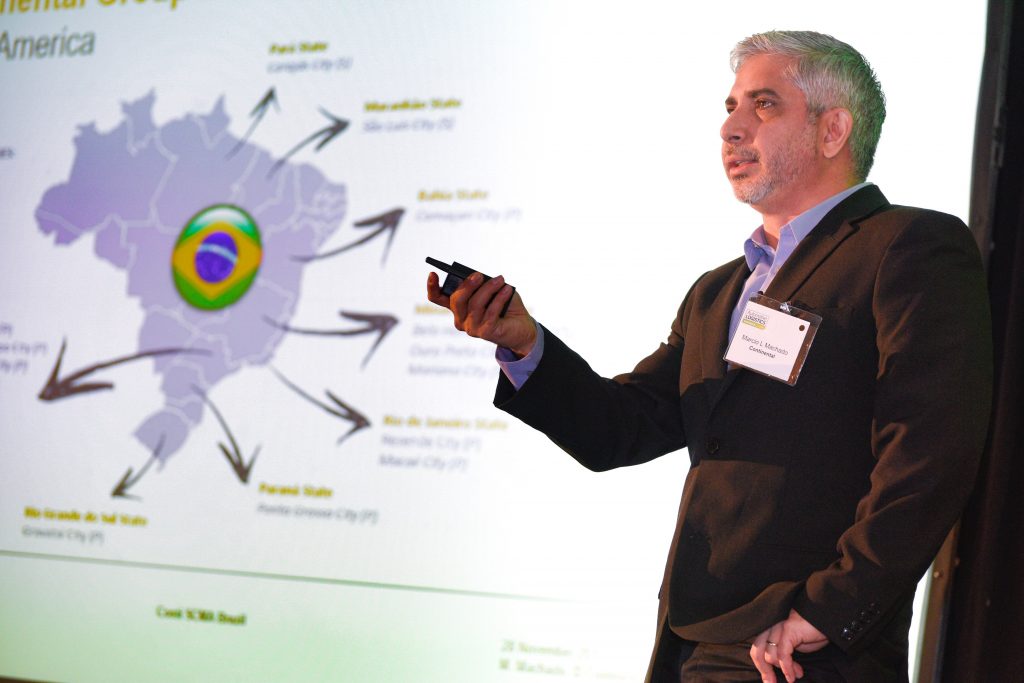
Marcio Machado, head of supply chain management for the central electronics plant in Brazil at tier supplier Continental, said challenges in the downturn included the obvious drop in volumes that came for most manufacturers, as well as excess capacity and large inventories.
Machado said that, during the downturn, Continental had analysed its supply chain in Brazil, which includes 11 plants, to identify opportunities to consolidate logistics flows across the network. The focus was not only on getting better prices from providers, but to improve load factors, labour productivity, packaging and logistics engineering.
“Only looking at costs is not enough, so you must look at how to reduce costs and add value for the customer,” said Machado.
Along with maintaining cost-efficiencies, executives also stressed the importance of manufacturers and suppliers partnering together to avoid waste.
“Over the last year, we have talked about what we could do to overcome this period of crisis in terms of relationships with our customers, not only logistics operators, but also OEM companies and all of the suppliers in the chain,” said Paulo Sarti, managing director for South America at Penske Logistics.
“The crisis forced companies to innovate and do things differently and we must not lose sight of this, because we tend to forget these things; when volumes start going up again, we tend to go back to the old ways of working,” he added.
Sarti highlighted collaborative logistics in terms of fleet and warehouse sharing, as well as other resources, as areas where the country had started to make progress and could go a lot further.
“Even in production, companies started sharing areas that were not [formerly] productive. This was not common for the automotive industry, but in the last few years this started happening strongly,” said Sarti. “It is important to not end this process of collaborative logistics once the economy goes back up.”
Alex Feijolo, director of sales and marketing at Gefco Brazil, also stressed that the automotive logistics sector in Brazil needed to improve collaboration, as most relationships between manufacturers, suppliers and logistics providers were extremely transactional, based on short-term contracts and annual bids. He called for more efforts to work together beyond the cheapest bid each year, pointing, among other things, to the high implementation costs and risks to supply chain operations that came with frequently changing logistics providers.
“We should look to implement a real partnership model that involves manufacturers and service providers,” he said.
Trying to recover a lost decadeSuch cautious approaches to this year’s growth may be wise for several reasons. For one, Brazil is not quite out of the woods yet. The past two years in Brazil have seen one president impeached, one previous president charged with corruption and the current one deeply unpopular following bribery allegations. Further political instability could have a dramatic impact on economic confidence – especially in the face of a difficult presidential election in 2018.
Secondly, despite the growth, Brazilian light vehicle sales have only recovered in comparison to the annus horribilis that was 2016, when sales slipped below 2m. Even 10% growth this year would only leave sales back at around 2007 levels; Paulo Sarti said Brazil had essentially experienced “a lost decade”.
 Paulo Sarti said that Penske had continued to invest in new technology and IT despite the crisis
Paulo Sarti said that Penske had continued to invest in new technology and IT despite the crisis“While there is lots to celebrate because the market is picking up again, we are actually going back to the levels of 10 years ago,” he said.
Meanwhile, delegates were warned that impressive light vehicle production growth this year was unlikely to continue in the short-to-medium term; production may plateau at current levels for several years before growing by around 3.5% a year through to 2023, according to PwC’s Helton Arsenio.
Only by then might the total number of light vehicles produced in the country test the 3m level, a full eight years after first dropping below that level and still well off the record 3.6m units built in 2013. In other words, Brazil’s production is facing the prospect of at least another lost decade.
The outlook is chastening when compared to what forecasters expected for Brazil and the wider region just a few years ago. In 2012, when the market was heading towards its peak, many forecasts suggested Brazilian sales and production would be in excess of 5m units by the end of the decade.
Exports, at least, have been a bright spot of late, although a reversal of what had been a long-term trend away from them. Light vehicle exports are up by close to 60% this year, compared to 2016; Arsenio said he expected vehicle shipments from Brazil would approach 700,000 vehicles, close to the record in 2005.
The biggest factors in Brazil’s export resurgence have been the strength in its main markets, notably Argentina and other Latin American markets, and a relatively weak local currency; the US dollar is currently worth around 3.2 reais, compared to 1.5 reais in 2011. Regulatory change is also thought to have helped, including simplified tax and declaration procedures, and improved integration in the Mercosur trade bloc.
Penske's Sarti noted that although Brazilian exports were mainly to countries in the South American region, the country could become more competitive on the global stage, especially as major carmakers in the country including FCA, Volkswagen Group, General Motors and Ford produce global models in Brazil based on common platforms that are also used across other regions.
“[Growth this year] highlights the possibility of Brazil becoming a global base for exports. Many OEMs in Brazil manufacture vehicles with global platforms which did not happen in the past,” said Sarti. “Of course, there are a series of issues such as tax costs and logistics costs, but we are starting to see Brazil as a potential player in global exports.”
 Neuton Karassawa said GM has been implementing its global GLIDE initiative in stages in South America
Neuton Karassawa said GM has been implementing its global GLIDE initiative in stages in South AmericaManaging custo BrasilHowever, high logistics, tax and regulatory costs in Brazil, along with chronic problems in infrastructure across roads, ports, rail and airports, continue to weigh negatively on Brazilian manufacturers and the overall economy – a combination that has long been referred to as the custo Brasil, or the high Brazilian cost of living. Neuton Karassawa, director of logistics at GM Brazil, pointed to high productivity rates at Brazilian manufacturing plants, but stressed that inefficiency in logistics and distribution, together with taxes and duties, had led to some of the worst overall supply chain costs in the world for GM – especially compared to countries with which it competes for production capacity.
In Mexico, which has surpassed Brazil in vehicle manufacturing, Karassawa pointed to much lower costs in many areas of logistics and supply chain. In just one example, for every $100 worth of parts that Mexico imports, manufacturers pay about $1 in customs and duties; in Brazil, the number is close to $15, according to Karassawa.
“We need to improve because no longer are our competitors the other 20 OEMs in Brazil; we are now competing with General Motors in other regions,” commented Karassawa.
Gefco’s Alex Feijolo also pointed out that Brazilian logistics costs had been rising this year, thanks to a higher diesel price.
FCA’s Santamaria added that poor infrastructure, together with poor visibility in the supply chain and poor communication across companies and their suppliers, contributed even further to such costs and inefficiencies.
“We are extremely unintegrated and end up working with pillars that are feudal. We should be able to work coherently and in a more unified manner to mitigate the lack of infrastructure in the region,” he said.
Investing in logisticsDespite the crisis and high supply chain costs in Brazil, OEM investments have continued in the region, including GM, FCA, Volkswagen Group and Jaguar Land Rover. GM, for instance, which combined its Argentina and Brazil operations under the GM Mercosur name earlier this year, recently announced a $1.4 billion investment in its São Caetano do Sul, Joinville and Gravataí facilities in Brazil. This was followed by an announcement of a $500m investment at its Alvear plant in Sante Fe, Argentina, to develop manufacturing facilities for a new Chevrolet-branded model.
FCA has also invested enormously in Brazil, including in a new factory producing Jeep models in Pernambuco, in the north-east, and a number of important model launches in both Brazilian and Argentine factories, said Santamaria.
Even as the crisis continued, premium OEM Jaguar Land Rover continued to set up its first production plant in Brazil; Volkswagen Group, meanwhile, added Audi output to its plant in Brazil and has also recently announced investments for a new SUV to be built in Argentina.
With these production investments has come a focus on logistics operations as well, and Karassawa pointed to the importance of further integrating production and logistics across the region.
“In the case of GM and other OEMs in the region, we no longer look at Brazil and Argentina [separately]; we look at Mercosur, because there are so many bilateral agreements. This requires analysis of strategy, production capacity and distribution channel strategy across the region,” he said.
Karassawa also pointed to efforts by GM to bring better logistics systems and processes to South America. The company will incorporate more of its Global Logistics Integrated Design and Execution (GLIDE) programme into the local market, for example, part of a multi-year business transformation project that encompasses several IT initiatives. And the ongoing changes for GM’s global logistics include centralised systems to improve visibility, global sourcing of goods, automated freight authorisation and cost forecasting. (For more on GLIDE, read here.)
“Since this is a global project, we have a schedule that is essentially divided by inbound and outbound. Within each one there is planning, sourcing, execution and freight. We have implemented part of the international system for inbound in Brazil as well as North America and now we are at the stage of implementing the local inbound system,” said Karassawa.
One example of this improvement, he pointed out, was a re-engineering of GM’s consolidation centres in Asia for shipping parts to North and South America, which included a 30% reduction in the facilities the carmaker used and a significant cost improvement.
Other areas of the supply chain will also be addressed in the coming years. “In terms of outbound logistics, we had a global workshop in the middle of the year to see the business requirements, which we will use to define a core model that can be used as a pillar for other regions,” he said.
The plan is to complete implementation of the entire GLIDE programme by 2019, according to Karassawa.
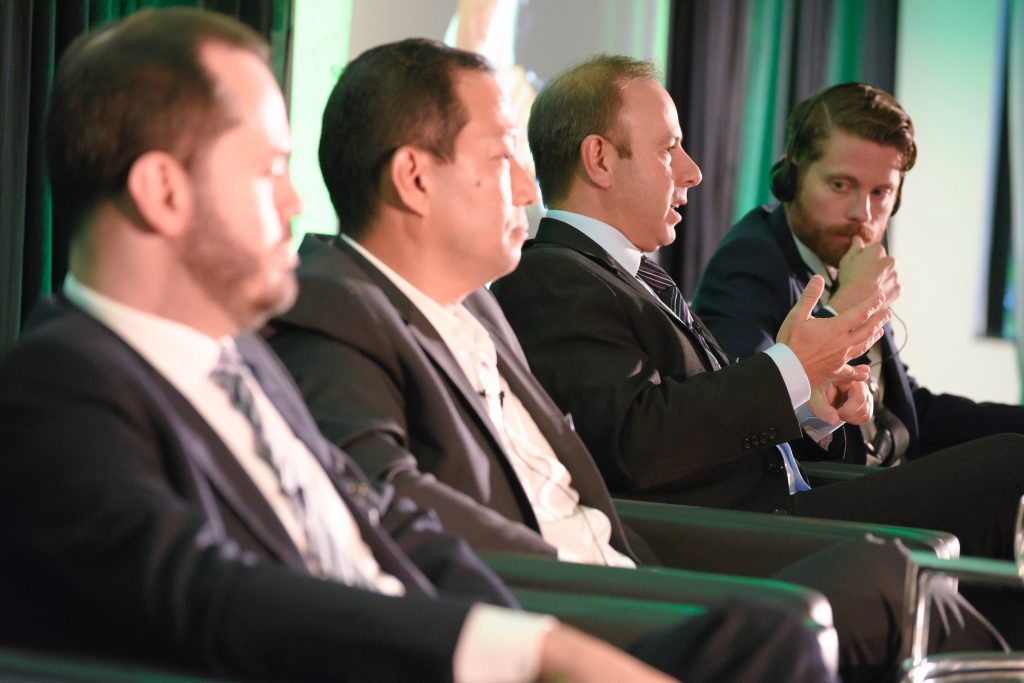 FCA's Luis Santamaria (second from right, speaking) said the carmaker was adapting global logistics systems and processes in Brazil
FCA's Luis Santamaria (second from right, speaking) said the carmaker was adapting global logistics systems and processes in BrazilFCA has also been making a number of improvements, including adapting global systems for its logistics in Brazil; according to Santamaria, improved data analytics are also helping the carmaker to better design and operate its inbound and outbound logistics flows.
Marcia Machado said tier supplier Continental had followed the example of its other major regions and introduced a sales and operations planning (S&OP) process and system for Brazil, which included logistics management teams working together with sales, production and marketing to regularly update forecasts and constraints.
“We update this S&OP process once per month and communicate it across the supply chain, which helps us and our suppliers to better prepare,” he said.
Marcelo Navarro, senior manager of material planning and logistics at JLR Brazil, said now that production at the plant was now stable, the carmaker was starting to look at improving its logistics operations in both its international and local supply chains.
“We are seeking optimisation in the supply of raw materials because most of them come from abroad. Another project is to optimise what we have locally,” said Navarro.
Carmakers are not alone in their investments. At both Penske and Gefco, for example, South American operations have benefited from global investments in new IT and transport management systems. “We do not own [transport and warehouse] assets in Brazil and so technology is our biggest investment,” said Sarti. “We are implementing a new logistics IT system and the crisis did not stop us.”
Fred Flintstone, meet George Jetson
Will such improvements in business IT and processes be enough to keep Brazil’s supply chain competitive? Executives are encouraged by ongoing progress but also point to wider changes across the industry that will impact South America.
While Brazil has struggled through its own crisis the past few years, carmakers across the world have grappled with implementing a range of new technologies and processes, whether vehicle electrification, connectivity or advanced manufacturing and IT systems. The country may not be on the forefront of the latest autonomous driving technology or so-called ‘industry 4.0’, but executives from global carmakers and logistics providers still stressed that the industry should explore new tools for raising efficiency and improving customer service.
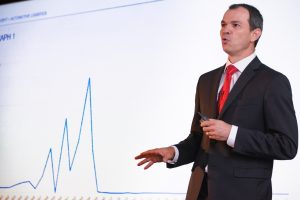 Gefco's Alex Feijolo warned that not all new technologies were yet applicable to its operations in Brazil
Gefco's Alex Feijolo warned that not all new technologies were yet applicable to its operations in BrazilContinental's Machado, for example, highlighted advanced robotics, enhanced transport management systems, automated guided vehicles (AGVs) and wearables as the type of technologies that could be implemented in the Brazilian automotive and logistics sector in the future. He pointed both to examples in Germany, where Continental was already using such technology, and to trials applicable to Brazil.
“I am doing research into industry 4.0 to see what kind of solutions we can bring to Brazil in the short-to-medium term,” said Machado. “The whole world is looking at this – if Brazil doesn't look at it we will fall even further behind.”
Speakers said there was a need to keep up constantly with what was out there, given the pace at which some innovations were developing.
“We are investing heavily in studies, but many of these things are still quite recent innovations and most cannot be implemented on an industrial scale,” said Gefco's Feijolo. “But with the speed at which things are happening now, all of us must pay close attention, because if you are not connected or aware of them, you will start too late.”
JLR’s Navarro said the carmaker was also exploring new technology applications for logistics automation and innovation, together with its lead logistics provider, DHL.
FCA's Santamaria encouraged the industry to go as fast as it could, as he predicted exponential shifts rather than incremental ones over the next five years, including in areas like e-commerce and electrification.
“I believe at some point e-commerce will also reinvent the automotive industry [in South America] and people will use this channel in another way to buy vehicles or secure mobility,” said Santamaria. “We have to be ready.”
He added that logistics would have to change as the market transitioned to new types of vehicles and powertrains. Brazil is already a special case in the global automotive industry, as many of its cars are ‘flex fuel’, powered by ethanol or petrol. However, he predicted that hybrid and even fully battery-electric vehicles would come to play a role in the region.
When they do, the change will lead to many new configurations in the supply chain, including logistics providers and manufacturers having to manage the import and transport of lithium-ion battery cells – material that is classified as hazardous material and which requires more specific processes and equipment.
“If you haven’t, go watch a video on YouTube of a lithium-ion battery that catches fire. It takes something like 36 hours to die down and otherwise can’t be put out,” he said. “How many shipping lines or airplanes are going to want to have loads of that aboard? We will have to work together to adapt to these changes as an industry.”
However, Santamaria said new forms of technology would not quickly supersede older ones; electric vehicles will share the road with petrol-powered ones; in plants, workers will carry out manual logistics tasks even as others are supported by AGVs or wearables. Supply chain managers will need to manage multiple pieces of equipment, systems and strategies simultaneously in South America, just like in the rest of the world.
“It is like the two cartoons about the past and the future: the Flintstones and the Jetsons. They are going to live together simultaneously from now on,” he said.
“Things are going to be disruptive and we are going to have to reinvent ourselves pretty quickly,” he concluded.
By Gareth Tredway and Christopher Ludwig.
Automotive Logistics South America is part of the global Automotive Logistics series of conferences.
The next conference in the series is the Automotive Logistics Mexico Conference, which will take place in Mexico City January 23-25th 2018

























![Global[1]](https://d3n5uof8vony13.cloudfront.net/Pictures/web/a/d/s/global1_726550.svgz)








